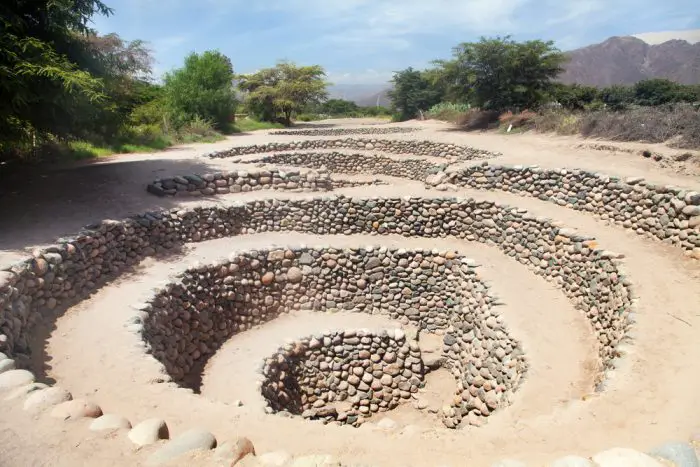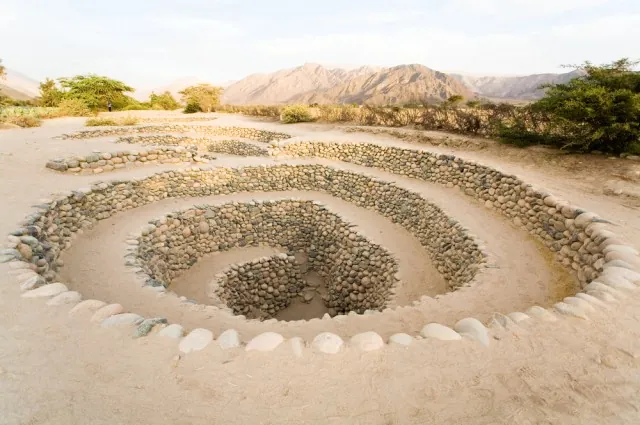The ancient Nazca civilization in Peru is renowned for its remarkable achievements, particularly in water management. Central to their survival in the arid desert environment were the cacchitos, a sophisticated network of wells designed to access underground water. These wells, along with the intricate underground aqueducts known as puquios, showcase the Nazca people’s exceptional understanding of hydrology and ingenuity.

A Remarkable Water Management Network
The Nazca civilization, which thrived from around 100 BCE to 800 CE, faced significant challenges due to its dry climate. To sustain their agriculture and daily life, the Nazca people developed an advanced water management system that included the cacchitos. These wells were strategically constructed to tap into the aquifers beneath the desert, ensuring a reliable water supply.
The design of the cacchitos was not only functional but also carefully crafted to prevent contamination. The wells featured narrow openings and were lined with stones to filter the water, reflecting the Nazca’s deep understanding of hydrology and the importance of maintaining water quality.
The Role of Puquios
Complementing the cacchitos were the puquios, an extensive network of underground aqueducts that transported water across the arid landscape. These aqueducts are a testament to the engineering skills of the Nazca people, who constructed them with remarkable precision. The puquios helped distribute water to various agricultural fields, allowing the civilization to thrive even in the harshest conditions.
This intricate system enabled the Nazca to cultivate crops such as cotton, maize, and potatoes, which were essential for their sustenance and trade. The successful integration of wells and aqueducts played a crucial role in their agricultural practices and contributed to the overall prosperity of the civilization.

A Legacy of Ingenuity
Today, the ancient well system in Nazca stands as a remarkable testament to the ingenuity of the Nazca civilization. These water management features not only highlight the resourcefulness of the Nazca people but also their ability to adapt to their challenging environment.
As modern Peru continues to grapple with water scarcity, the ancient techniques employed by the Nazca offer valuable insights into sustainable water management practices. The cacchitos and puquios remain a source of inspiration, illustrating how ancient civilizations can inform contemporary approaches to environmental challenges.
Conclusion
The ancient well system of Nazca is a stunning example of human ingenuity and adaptability. The cacchitos and puquios reflect the sophisticated understanding of hydrology that allowed the Nazca civilization to flourish in one of the most inhospitable regions on Earth. As we admire these incredible structures, we gain not only a glimpse into the past but also valuable lessons for the future of water management in our own times.




